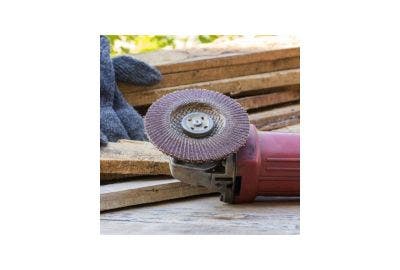Cars can be advantageous to own, but they don’t remain shiny and new forever. Faded car paint is a common issue, where parts of the paint become chalky and white whilst others retain more of their shine.
However, this problem doesn’t have to lead to repainting the car. When caught early enough, solutions are available to restore the paint’s original look.
So, what causes this white, chalky effect on car paint, and what can you do to amend it?
This blog explains the causes of faded car paint and how to restore the original colour and shine.
What Causes Car Paint to Turn White and Chalky?

Faded car paint has numerous causes, including the following:
Bird droppings
As a naturally acidic substance, bird droppings can damage car paint if you don’t remove them.
Failing to look after the paint
You won’t amend its issues if you don’t care for the finish. People who regularly clean and polish their cars tend to have shinier vehicles.
Paint type
If the paint is mixed with the clear coating, it is more likely to fade than when the layers are applied separately.
Salt on the road
Whilst used to melt ice, salt can rust the paint as it builds up on the car. Vehicles in coastal areas or colder climates are more susceptible to this.
Sunlight
Car paint fading in the sun is the most common cause. UV from the sun can break down the paint and oxidise it, leaving it white and chalky. Oxidised paint can become rough and, eventually, come off the car.
This list of causes is not comprehensive.
Tools to Restore Faded Car Paint
If you are wondering how to repair sun-damaged car paint or faded, chalky paint caused by any of the ways listed above, here are five tools that make the process easier and can provide the ideal results.
1. Buffer
A buffer is crucial for anyone wanting to restore faded car paint. The buffing process helps to bring back that lustre to your vehicle, leaving a noticeable difference when completed. You may need several different buffing pads and compound types to achieve optimal results.
Buffers are ideal for this situation as they remove the surface layer of damaged paint. You can find air-powered, battery-powered or electric variations.
For example, the Ingersoll Rand Air Polisher and Buffer Tool is an air-powered option with various speed settings. It can provide up to 6,400 RPM and is ideal for plastic, metal and paint use.
When selecting a buffer, you should consider several factors. First, the power of the tool is crucial. Opt for one with sufficient power to tackle the task at hand, but be cautious not to choose one that is too powerful, as it may cause damage to the paint surface.
Use a damp buffing pad and add a small amount of the buffing compound. You need approximately 1 tsp of the liquid but always follow manufacturer recommendations. The buffer uses a rotating pad to remove oxidation, scratches, and swirl marks, resulting in a smooth and glossy finish.
Please note you should never have your buffer pad face-down on the ground. Doing this can transfer debris and dirt to your car and scratch the paint.
When using a buffer, ensure you use the correct pads to gain that desired finish and follow manufacturer guidelines for the right buffer speed.
2. Polisher

After buffing the vehicle, you need polishing tools to remove imperfections and restore the original shine.
Electric polishers are ideal if you use them for prolonged periods. In contrast, cordless polishers enable you to work in different locations or if you are away from a power source.
Look for a polisher with an ergonomic design and comfortable grip, which will minimise fatigue during extended polishing sessions. Additionally, a lightweight polisher will make manoeuvring easier.
Use the polisher similarly to the buffer. You still add approximately 1 tsp of polish in the centre of the pad unless specified by the product manufacturer, and follow the guidelines for the polishing speed. When using this tool, overlap your strokes and apply gentle and consistent pressure.
The finishing polish should be the final polish for your car. This tool can help remove any swirl marks the buffer left behind and enhance the paint’s shine.
3. Microfibre Cloth

Several elements of the car paint restoration process, such as washing the vehicle, require a soft microfibre cloth. When used after buffing, it helps remove the remaining residue from the vehicle’s surface so you can see if there are outstanding issues.
The softness of the cloth allows the removal of dirt and residue whilst minimising the risk of scratches.
Cloths like the Mirka 2 Pack Yellow Micro Fibre Cloth are ideal for applying wax. You can add this coating to the fabric and rub it on the car in circular motions. If you wish for a more durable solution, the cloth can also help apply paint sealant similarly. After waxing, use a dry, clean cloth to remove the residue.
Do not wash a microfibre cloth with bleach or fabric softeners. Instead, use cold water and a liquid detergent, remembering to wash the cloth every time you use it.
4. Polishing Compound

If the paint on your car is fading, using the correct polishing compound is imperative to restore the shine.
For example, Polarshine Finishing Compound is a water-based product that can leave high-gloss finishes whilst removing swirl marks. You can use this compound for numerous lacquers and paints.
Polishing compounds help bring out the car’s lustre and remove imperfections, light scratches and oxidation. Finer polishes are ideal for milder issues, whereas more severe damage may need a more cutting alternative. After polishing, remove any residue to ensure no remaining marks or dull areas.
Use the polish after washing and buffing your car, though be aware that buffing compounds can be called cutting polish. Add a small amount to your polishing pad and press against the faded paint. Use the polisher to move the pad across the surface using a mixture of vertical and horizontal motions, working in small sections.
You may need to repeat this process several times to achieve your desired look.
Ensure you follow the product recommendations when using a polishing compound to obtain the best possible results. The type of polish you need will depend on the severity of the faded paint.
5. Polishing Pads

Different polishing pads suit different compounds, so you must find the right one for your car and its needs. Some are more abrasive than others: you should use softer pads towards the end of the restoration process.
Three types of polishing pads include:
- Wool - a harsh pad ideal for more serious issues, though the car will require more polishing afterwards.
- Microfibre - a less aggressive alternative to wool, though still able to work with more challenging damage.
- Foam - this option has more variation and can help with light to medium defects, depending on which one you use.
Always check the manufacturer’s guidelines before use, and understand the specific compounds you should use some pads with.
To use a polishing pad, ensure the polisher is turned off and attach the pad to the tool. Add a small amount of compound to the pad’s centre, then turn on the device to use on your car.
You can use multiple pads to restore your vehicle, enabling you to use various compounds to enhance the vibrancy of the paint by the end of the process.
Faded car paint can be an ongoing battle, and the sun, road salt and other causes can damage the surface so it appears dull. However, you can combat this issue with the right tools and restore the paint’s original shine.
If you are looking for help with other projects in the garage or at home, Heamar have a range of power tools available to support you.































